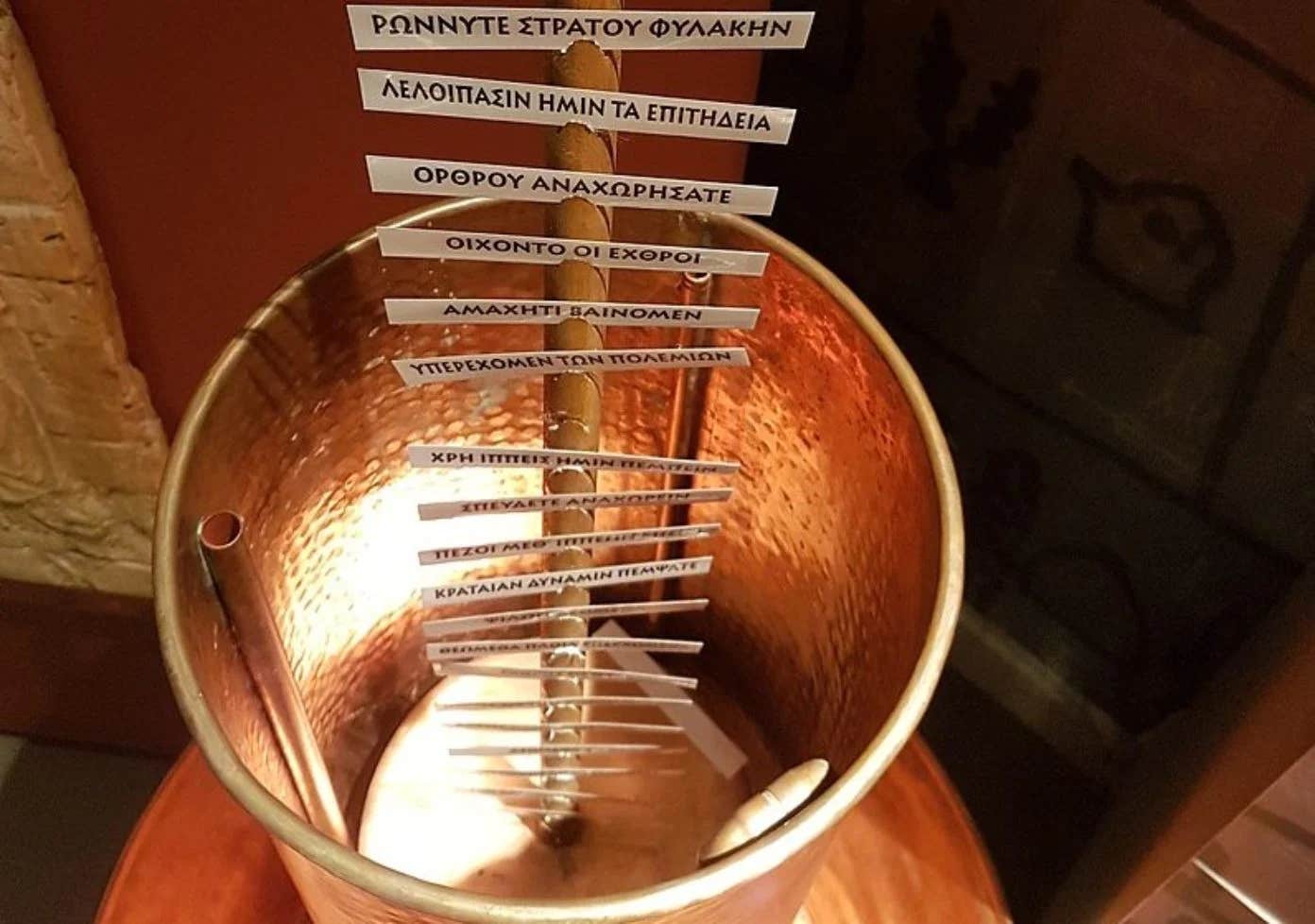Introducing the world’s-first telecommunication device from 2,500 years ago
The hydraulic telegraph, credited as the world’s first telecommunications device, traces its roots back to ancient Greece.

The hydraulic telegraph, credited as the world's first telecommunications device, traces its roots back to ancient Greece. (CREDIT: Gts-tg/Wikipedia)
The hydraulic telegraph, credited as the world's first telecommunications device, traces its roots back to ancient Greece, where it was ingeniously crafted by Aeneas Tacticus for military use around the fourth century BC.
Aeneas designed this apparatus to facilitate the efficient transmission of pre-arranged messages across the vast expanse of Alexander the Great's empire, as detailed in his work on sieges, Poliorcetika, later documented by historian Polybius.
Operated during times of war, the hydraulic telegraph comprised several telecommunication stations strategically positioned atop hills throughout ancient Greece. Messengers stationed at these sites utilized clay or metal cylindrical containers, each filled with water and equipped with a cork float. These floats were affixed to rods inscribed with predetermined messages, allowing for their transmission.
To initiate communication, the transmitting operator would raise a burning torch, signaling the receiver to prepare for message reception. Upon confirmation from the receiver's raised torch, both operators simultaneously opened the taps on their devices.
As water flowed, the rods descended, displaying the desired message at the rim of each container. Signaled once more by the transmitter's torch, the operators would simultaneously halt the outflow, ensuring the accurate transmission of the message.
This intricate process required absolute synchrony between operators to prevent the transmission of incorrect messages, vital for effective wartime communication.
Related Stories
Polybius preserved the detailed description of the hydraulic telegraph, emphasizing its significance in ancient Greek military strategy.
Despite its apparent simplicity, the hydraulic telegraph represented a groundbreaking advancement in communication technology for its time.
Its ability to send predetermined messages across long distances, coupled with the obscurity of its signals, rendered it invaluable for military purposes.
A relief of the ancient Greek hydraulic telegraph of Aeneas, artist/period unknown. (CREDIT: Creative Commons)
During the First Punic War (264 to 241 BC), messages were successfully transmitted from Sicily to Carthage using this innovative device, also known as a Semaphore line.
The hydraulic telegraph revolutionized military communication and strategy, enabling rapid dissemination of critical information to prepare for potential threats. This early form of long-distance communication laid the foundation for subsequent advancements, shaping the diverse array of communication methods available today.
4th century Greek hydraulic telegraph (reconstruction based on descriptions by Aeneas Tacticus and Polybius). Thessaloniki Technology Museum. (CREDIT: Gts-tg/Wikipedia)
A replica of Aeneas Tacticus's hydraulic telegraph, along with historical messages from periods of war, is showcased at the OTE Group Telecommunications Museum in Athens.
This serves as a testament to the enduring legacy of this ancient innovation and its pivotal role in shaping the evolution of communication technology.
For more science stories check out our New Discoveries section at The Brighter Side of News.
Note: Materials provided above by The Brighter Side of News. Content may be edited for style and length.
Like these kind of feel good stories? Get the Brighter Side of News' newsletter.



